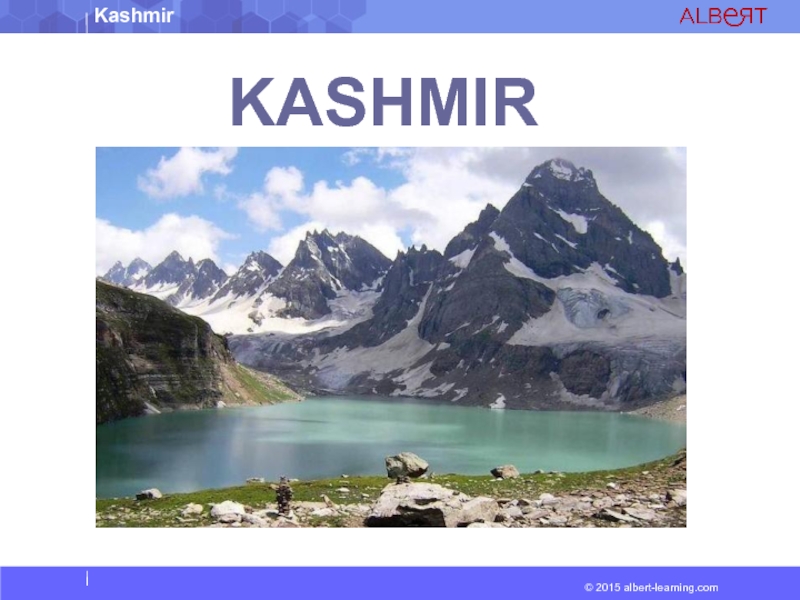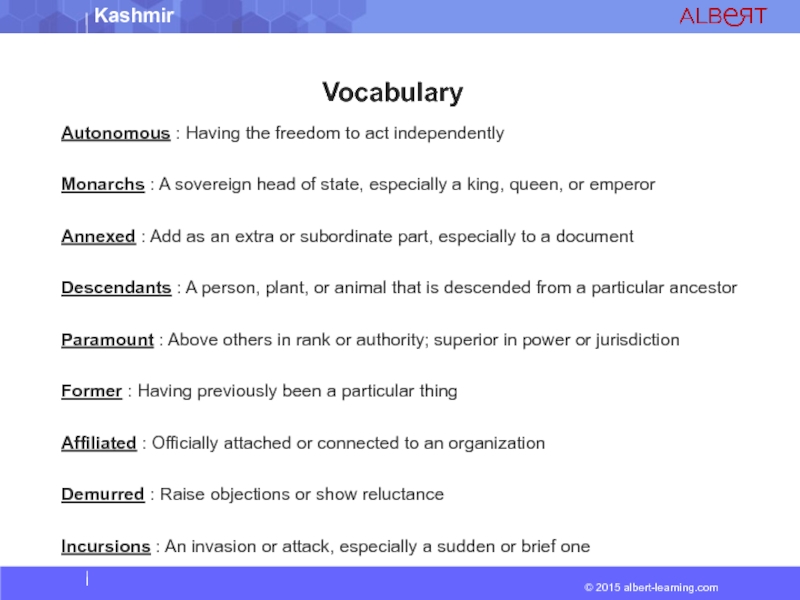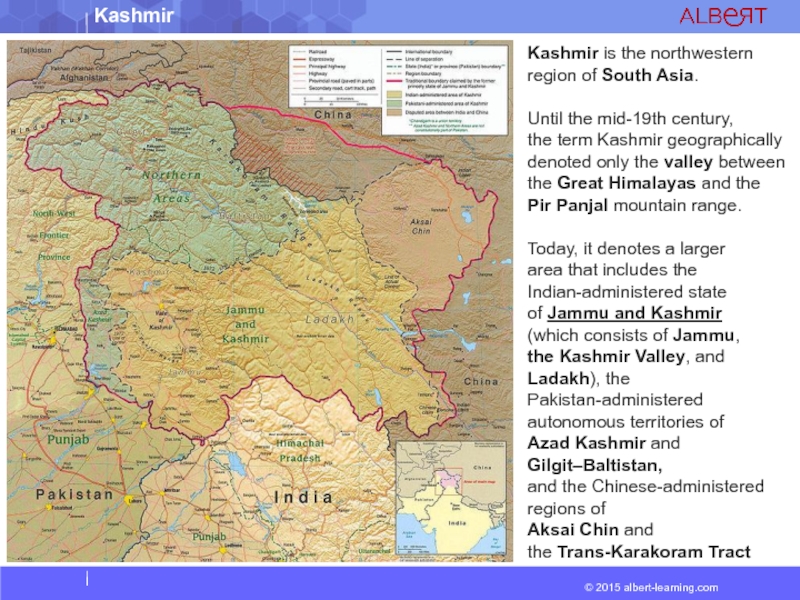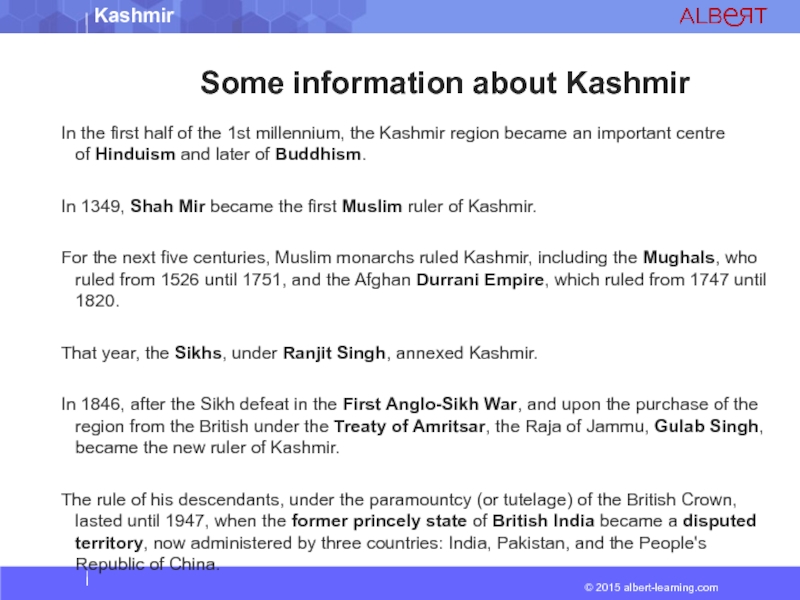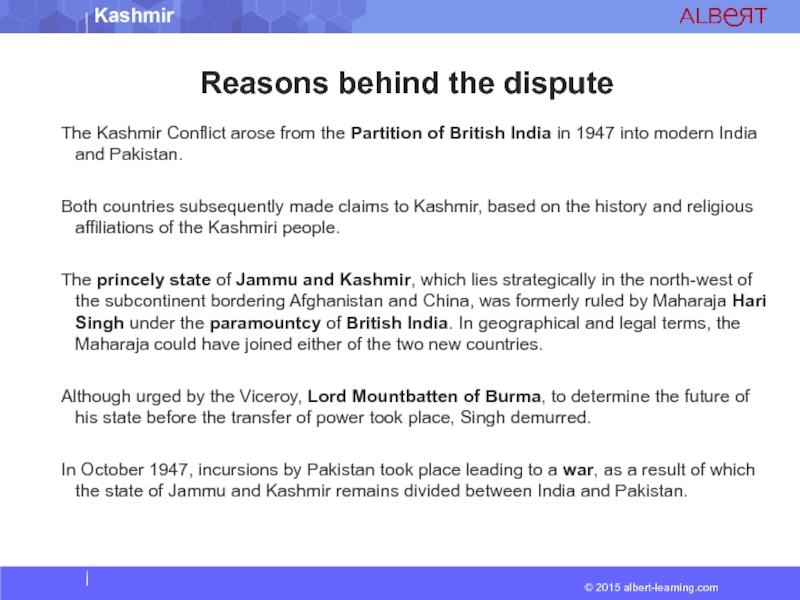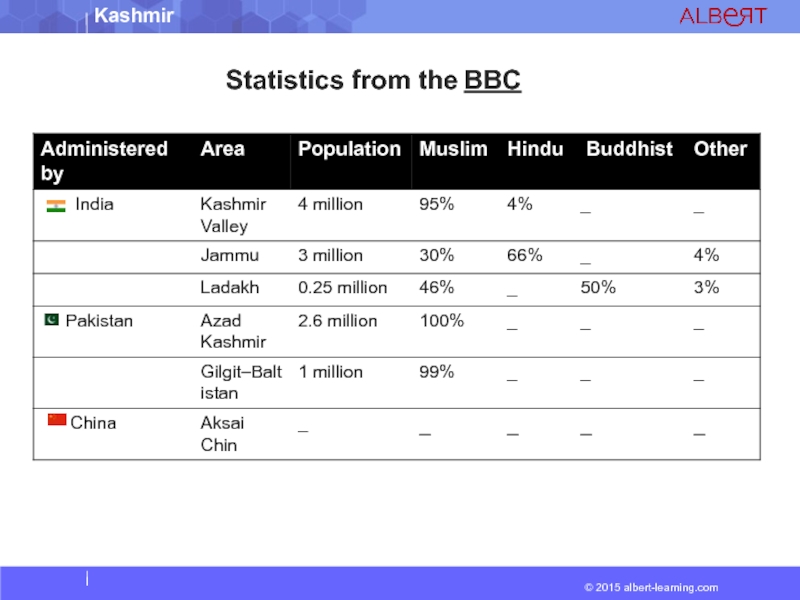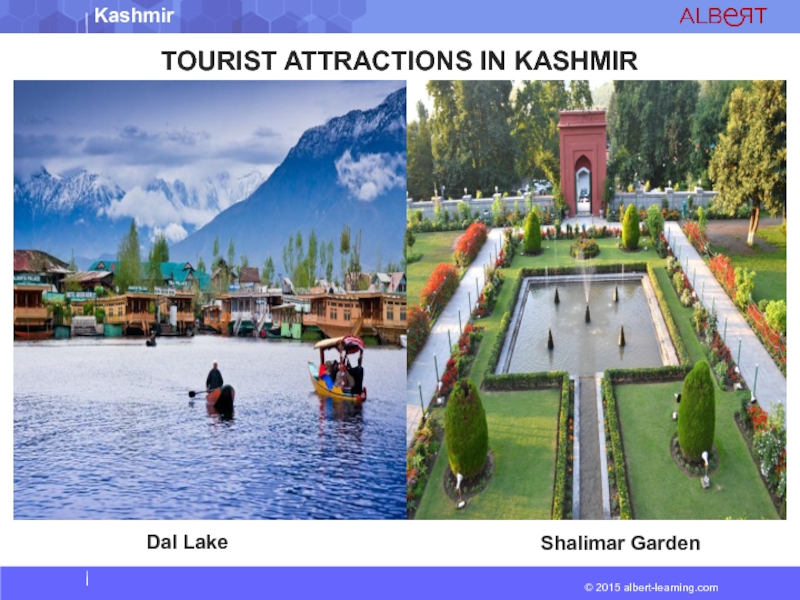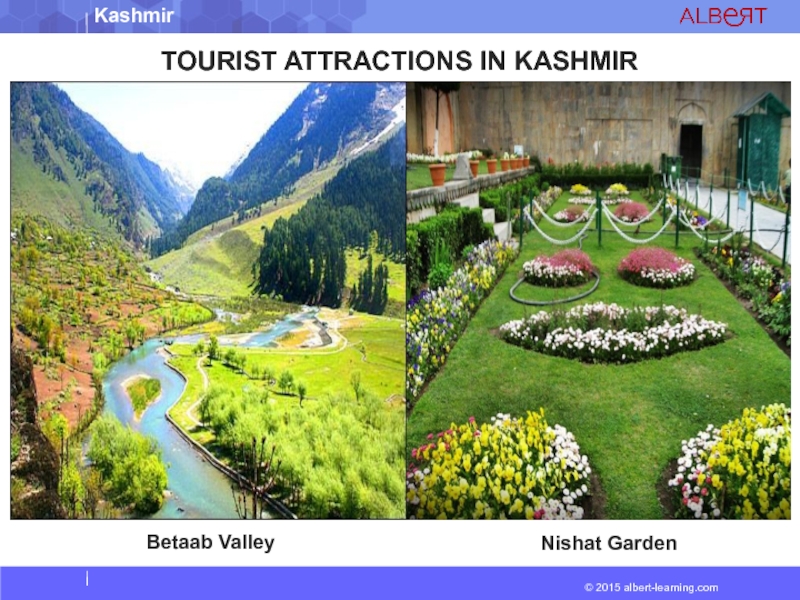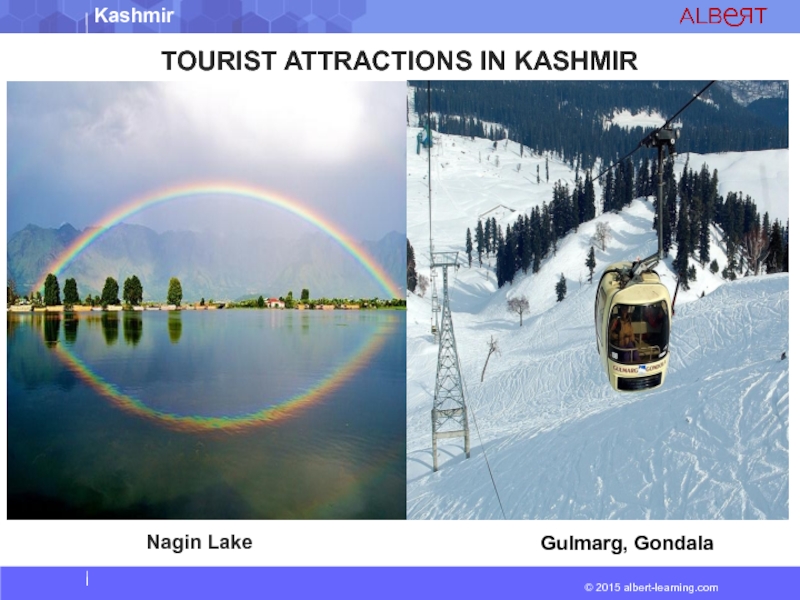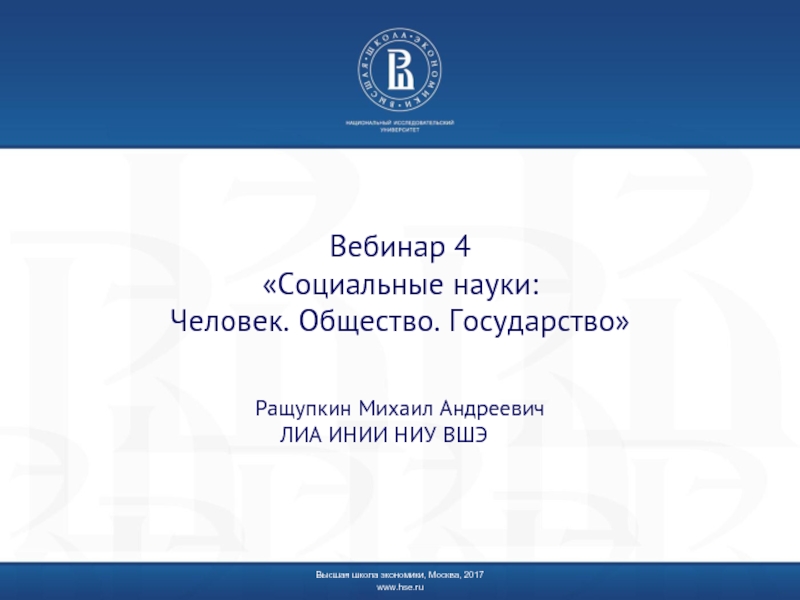- Главная
- Разное
- Дизайн
- Бизнес и предпринимательство
- Аналитика
- Образование
- Развлечения
- Красота и здоровье
- Финансы
- Государство
- Путешествия
- Спорт
- Недвижимость
- Армия
- Графика
- Культурология
- Еда и кулинария
- Лингвистика
- Английский язык
- Астрономия
- Алгебра
- Биология
- География
- Детские презентации
- Информатика
- История
- Литература
- Маркетинг
- Математика
- Медицина
- Менеджмент
- Музыка
- МХК
- Немецкий язык
- ОБЖ
- Обществознание
- Окружающий мир
- Педагогика
- Русский язык
- Технология
- Физика
- Философия
- Химия
- Шаблоны, картинки для презентаций
- Экология
- Экономика
- Юриспруденция
State of India - Kashmir презентация
Содержание
- 1. State of India - Kashmir
- 3. Kashmir is the northwestern region of South Asia.
- 4. In the first half of the 1st
- 5. The Kashmir Conflict arose from the Partition of
- 6. Statistics from the BBC
- 7. TOURIST ATTRACTIONS IN KASHMIR Dal Lake Shalimar Garden
- 8. TOURIST ATTRACTIONS IN KASHMIR Betaab Valley Nishat Garden
- 9. TOURIST ATTRACTIONS IN KASHMIR Nagin Lake Gulmarg, Gondala
Слайд 2
Autonomous : Having the freedom to act independently
Monarchs : A sovereign head of state, especially a king, queen, or emperor
Annexed : Add as an extra or subordinate part, especially to a document
Descendants : A person, plant, or animal that is descended from a particular ancestor
Paramount : Above others in rank or authority; superior in power or jurisdiction
Former : Having previously been a particular thing
Affiliated : Officially attached or connected to an organization
Demurred : Raise objections or show reluctance
Incursions : An invasion or attack, especially a sudden or brief one
Слайд 3Kashmir is the northwestern
region of South Asia.
Until the mid-19th century,
the
denoted only the valley between
the Great Himalayas and the
Pir Panjal mountain range.
Today, it denotes a larger
area that includes the
Indian-administered state
of Jammu and Kashmir
(which consists of Jammu,
the Kashmir Valley, and
Ladakh), the
Pakistan-administered
autonomous territories of
Azad Kashmir and
Gilgit–Baltistan,
and the Chinese-administered
regions of
Aksai Chin and
the Trans-Karakoram Tract
Слайд 4In the first half of the 1st millennium, the Kashmir region
In 1349, Shah Mir became the first Muslim ruler of Kashmir.
For the next five centuries, Muslim monarchs ruled Kashmir, including the Mughals, who ruled from 1526 until 1751, and the Afghan Durrani Empire, which ruled from 1747 until 1820.
That year, the Sikhs, under Ranjit Singh, annexed Kashmir.
In 1846, after the Sikh defeat in the First Anglo-Sikh War, and upon the purchase of the region from the British under the Treaty of Amritsar, the Raja of Jammu, Gulab Singh, became the new ruler of Kashmir.
The rule of his descendants, under the paramountcy (or tutelage) of the British Crown, lasted until 1947, when the former princely state of British India became a disputed territory, now administered by three countries: India, Pakistan, and the People's Republic of China.
Some information about Kashmir
Слайд 5The Kashmir Conflict arose from the Partition of British India in 1947 into
Both countries subsequently made claims to Kashmir, based on the history and religious affiliations of the Kashmiri people.
The princely state of Jammu and Kashmir, which lies strategically in the north-west of the subcontinent bordering Afghanistan and China, was formerly ruled by Maharaja Hari Singh under the paramountcy of British India. In geographical and legal terms, the Maharaja could have joined either of the two new countries.
Although urged by the Viceroy, Lord Mountbatten of Burma, to determine the future of his state before the transfer of power took place, Singh demurred.
In October 1947, incursions by Pakistan took place leading to a war, as a result of which the state of Jammu and Kashmir remains divided between India and Pakistan.
Reasons behind the dispute
